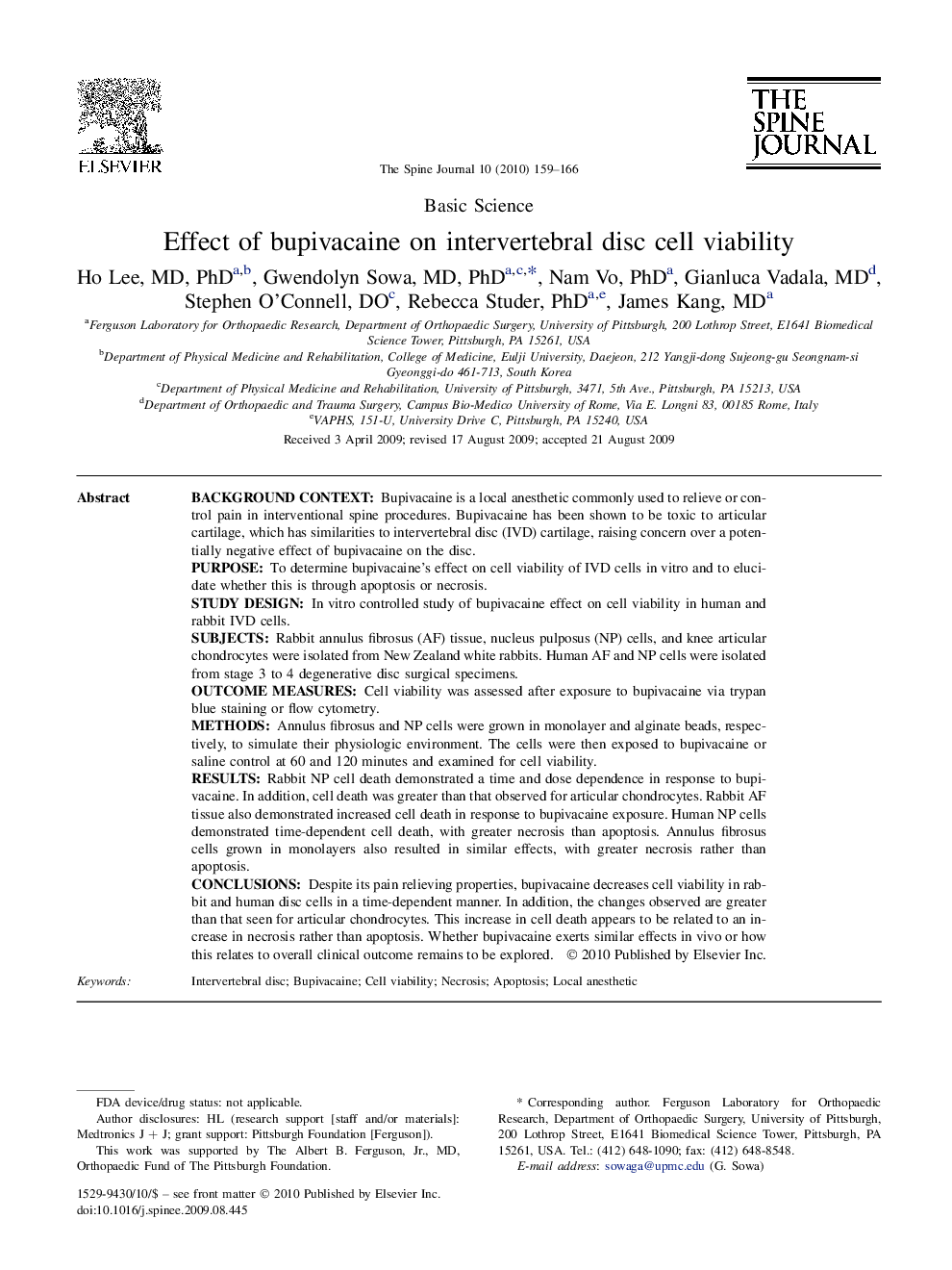| کد مقاله | کد نشریه | سال انتشار | مقاله انگلیسی | نسخه تمام متن |
|---|---|---|---|---|
| 4098777 | 1268624 | 2010 | 8 صفحه PDF | دانلود رایگان |

Background contextBupivacaine is a local anesthetic commonly used to relieve or control pain in interventional spine procedures. Bupivacaine has been shown to be toxic to articular cartilage, which has similarities to intervertebral disc (IVD) cartilage, raising concern over a potentially negative effect of bupivacaine on the disc.PurposeTo determine bupivacaine's effect on cell viability of IVD cells in vitro and to elucidate whether this is through apoptosis or necrosis.Study designIn vitro controlled study of bupivacaine effect on cell viability in human and rabbit IVD cells.SubjectsRabbit annulus fibrosus (AF) tissue, nucleus pulposus (NP) cells, and knee articular chondrocytes were isolated from New Zealand white rabbits. Human AF and NP cells were isolated from stage 3 to 4 degenerative disc surgical specimens.Outcome measuresCell viability was assessed after exposure to bupivacaine via trypan blue staining or flow cytometry.MethodsAnnulus fibrosus and NP cells were grown in monolayer and alginate beads, respectively, to simulate their physiologic environment. The cells were then exposed to bupivacaine or saline control at 60 and 120 minutes and examined for cell viability.ResultsRabbit NP cell death demonstrated a time and dose dependence in response to bupivacaine. In addition, cell death was greater than that observed for articular chondrocytes. Rabbit AF tissue also demonstrated increased cell death in response to bupivacaine exposure. Human NP cells demonstrated time-dependent cell death, with greater necrosis than apoptosis. Annulus fibrosus cells grown in monolayers also resulted in similar effects, with greater necrosis rather than apoptosis.ConclusionsDespite its pain relieving properties, bupivacaine decreases cell viability in rabbit and human disc cells in a time-dependent manner. In addition, the changes observed are greater than that seen for articular chondrocytes. This increase in cell death appears to be related to an increase in necrosis rather than apoptosis. Whether bupivacaine exerts similar effects in vivo or how this relates to overall clinical outcome remains to be explored.
Journal: The Spine Journal - Volume 10, Issue 2, February 2010, Pages 159–166